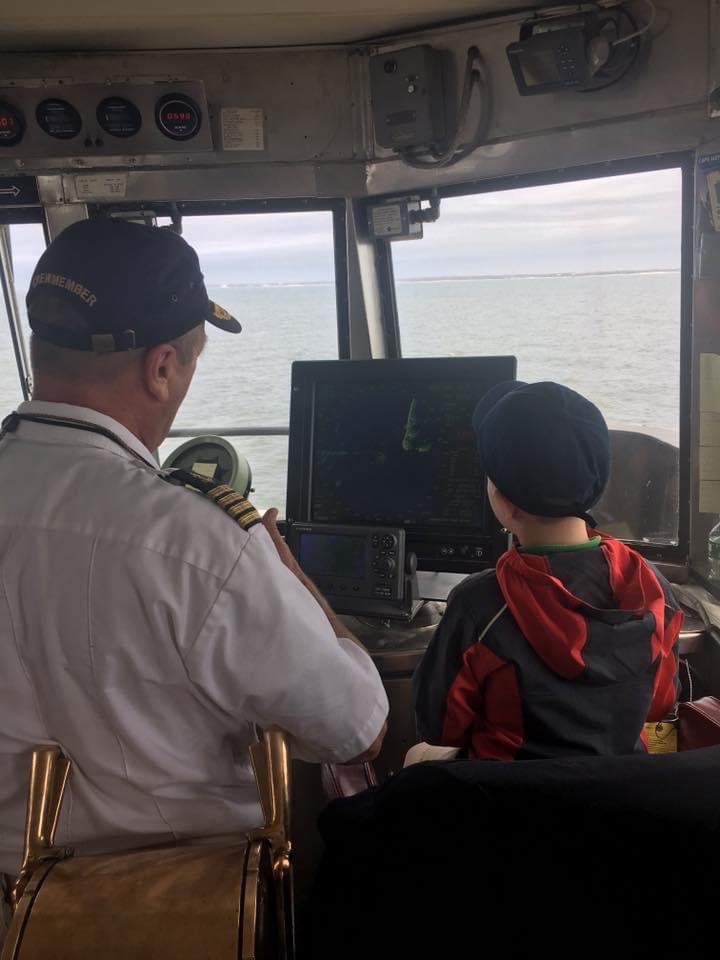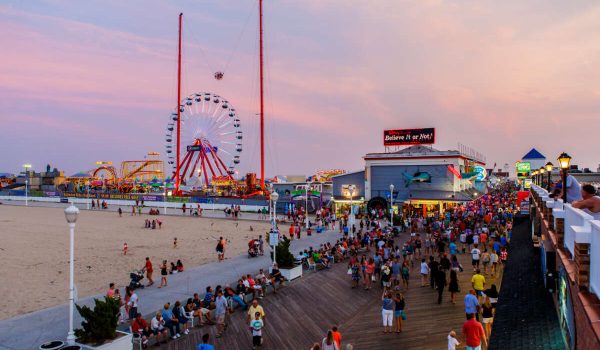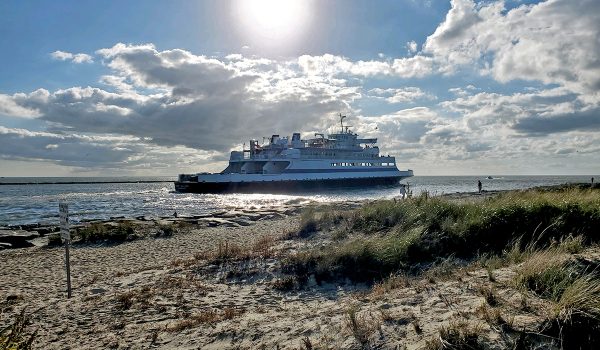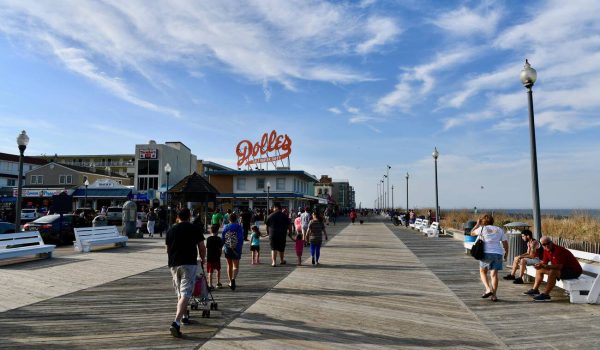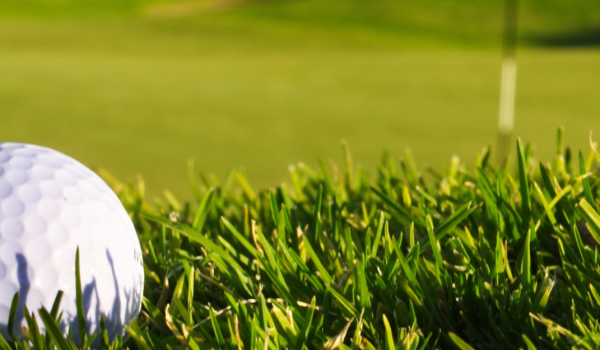"How can I become a Cape May-Lewes Ferry Captain?"
We get asked this question many times. In general, you start at the bottom and work your way up.
If you come to the Ferry with prior maritime experience either — say in commercial fishing, the Navy, or from a maritime academy — the process can move faster. Usually, however, deck officers start in lesser positions and some start as an entry-level deckhand or ordinary seaman (OS). This is good news for people who don’t have formal training in the industry, or young and second career folks who want to learn on the job.
The Historical Exception
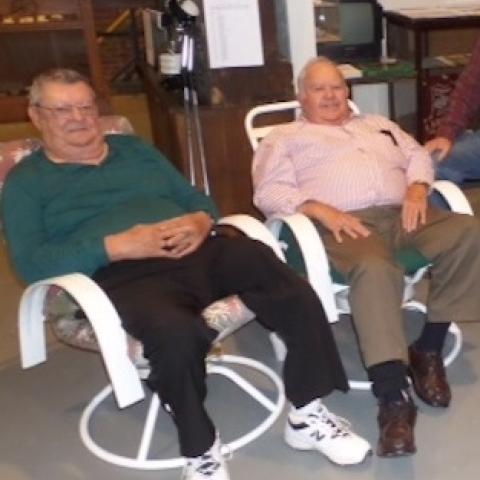
The very first ferries used to cross the Delaware Bay for the Cape May-Lewes system came from the Virginia Ferry Corporation which operated ferries crossing the Chesapeake Bay before the construction of the Chesapeake Bay Bridge Tunnel.
Four ferries were purchased and two of the existing Virginia captains — Billy Ray Phillips and Richard Belote (l-r)– transferred to the Delaware River & Bay Authority (DRBA) to sail the boats and mentor new mariners in vessel operations.
One young crewman, Charles Belote, was Captain Belote’s son, later serving on the CMLF as an Ordinary Seaman (OS), life boat man, and Able-bodied Seaman (AB) under his dad. In 2013, Belote senior and Phillips met with the Cape Charles Historical Society to reminisce about earlier times including their joint tenure at the Cape May-Lewes Ferry during the 1960’s and 70’s (see photo above).
Today's Career Path
Regardless of the vessel, captains today go through a series of steps to reach the top bridge officer position. The training varies depending on the class of vessel and body of water being sailed, but there are some basics including a defined amount of sea time. In general, the needed experience is a few years on the specific shipping line where you want to rise to captain. As an example, ferry captains must have sailed as a mate for at least 360 days, have the proper USCG license and pilotage endorsement and, most importantly, the required experience.
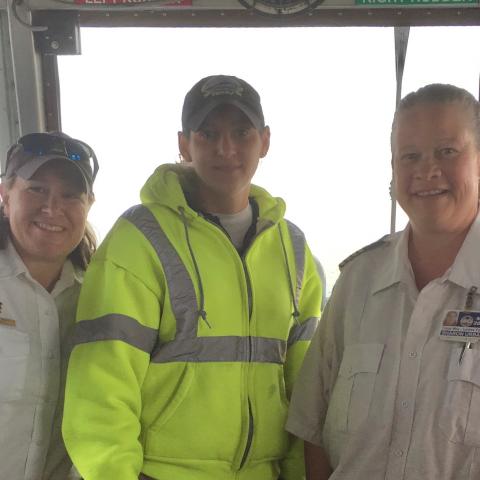
A captain can lead from the bridge of multiple vessels in a cruise or shipping line that are similar in category and sail on the same body of water. A Cape May-Lewes Ferry Captain, for instance, can be the senior bridge officer on any of the Cape May-Lewes Ferry vessels. But before this happens, there are two significant hurdles.
First, a deck officer must earn a pilotage endorsement. To do this, he or she must draw the entire chart of the Delaware Bay in which the ferry operates from memory! Secondly, the deck officer spends time with other captains, and must earn their confidence — and that of the port captain — by gaining sign-off on a lengthy checklist of skills including dockings and other maneuverings in fog and rough seas/heavy traffic. Not all prospective captains succeed these tests.
It is also the reason captains from other ferry and shipping systems cannot just assume duty on the Ferry and, instead, start work as lower deck officers, progressing up the ranks when they qualify with enough sea time, licenses and experience specific to the Delaware Bay.
Although an increasing number of young mariners are coming into the maritime trade with post-secondary education or training through the Coast Guard, Navy or maritime academies, it is still a hands-on craft where experience is required in addition to book learning.
Different Life Experiences
Two of our current bridge officers, Captains Melissa Velli and Sharon Urban, started with the Ferry working in food and retail operations. While handling these duties onboard the ferries, they learned about marine career possibilities. Both subsequently transferred to the Marine Department and started as ordinary seamen to learn operations from the bottom up.
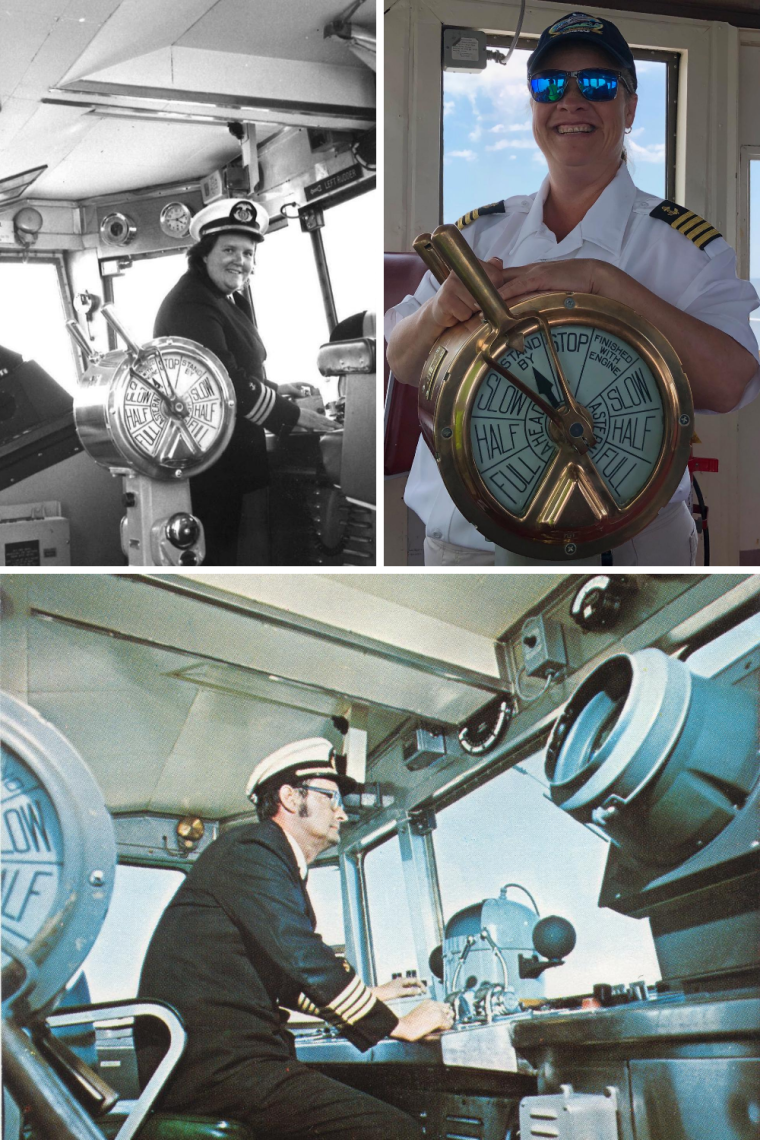
Captain Urban made history on July 22, 2020 when she became the first permanent female Captain in the history of the system. In total, four women have served as captains at the Ferry, with the first being Linda Douglas in August 1991. Douglas joined the Ferry in 1982 with prior Coast Guard training to become a CMLF Captain after 9 years. Urban started in the marine division in 1997 becoming a Captain after two decades of on-the-job training.
Two other current bridge officers, Captain Meghan Palmer and Captain Jim Harkin, came to the Ferry with different levels of marine experience. Captain Palmer was a graduate of the U.S Merchant Marine Academy were she received a BS degree in Logistics and Intermodal Transportation and earned an Ocean’s Unlimited Tonnage Third Mate’s License. Captain Palmer was hired in 2011 and qualified to sail as a Captain in 2018 after 7 years. Captain Harkin was a naval officer before coming to the Ferry and advanced to bridge captain after 6 years of CMLF experience. Their timeframes were shortened somewhat due to their prior maritime experience and credentials.
It's A Ferry Large Job!
Want to learn more about CMLF Captains? Click on the button below to go to our Captain’s page and see their pictures. Click on the pictures to read their different stories.
Are You Ready to Get Started?
- You must be at least 18 years of age to work on the Cape May-Lewes Ferry boats.
- Ordinary Seamen (OS) generally start as casual (or seasonal) workers, first working a summer to see how they like it. Many also first start as dock attendants.
- As full time positions open up, casual OS workers can apply for the full-time positions.
- Once properly credentialed at the next level of Able-Bodied Seaman (AB), OSs frequently sail up as ABs while waiting for a full-time AB position to open up.
- From the AB position, mariners can train and gain credentials while on-the-job to work toward officer positions ranging from Bosuns and Helmsmen to Mates
- Once a Mate, a deck officer generally has gained the pilotage endorsement and can sail-up to Pilot.
- Once a Pilot, a mariner has a captain’s license and can become qualified to sail as captain. Each position has its own set of requirements as officers work toward become the Master, or Captain, on the Bridge.
- All posts as they become open are listed on DRBA.net under Employment Opportunities.
The ferry operates year-round so there are generally a few posts always open with positions ranging from marine engineers and mechanics to food and retail personnel and ordinary seaman. If you want to work out on the water, there’s a likely a job of interest for you! Check out our hiring page to get a sense of the many ways you can join our team!
Explore Things To Do In The Area
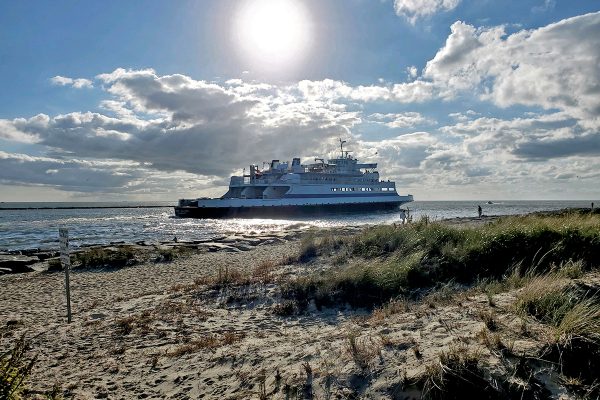
New Year, New Adventures: 10 Ferry Travel Resolutions for 2026


